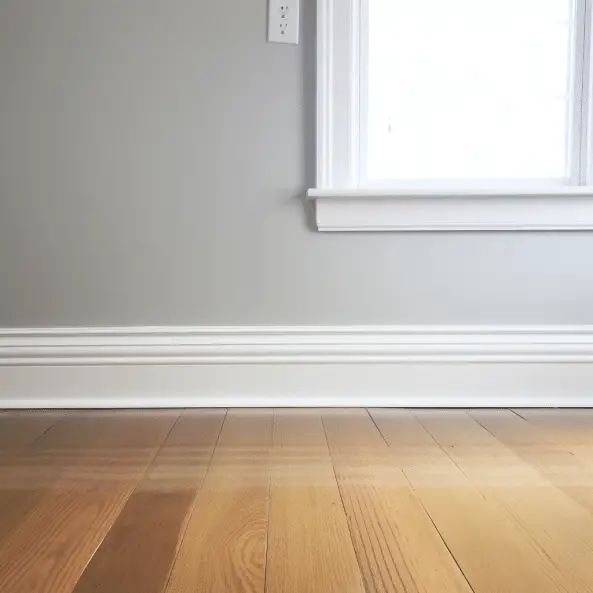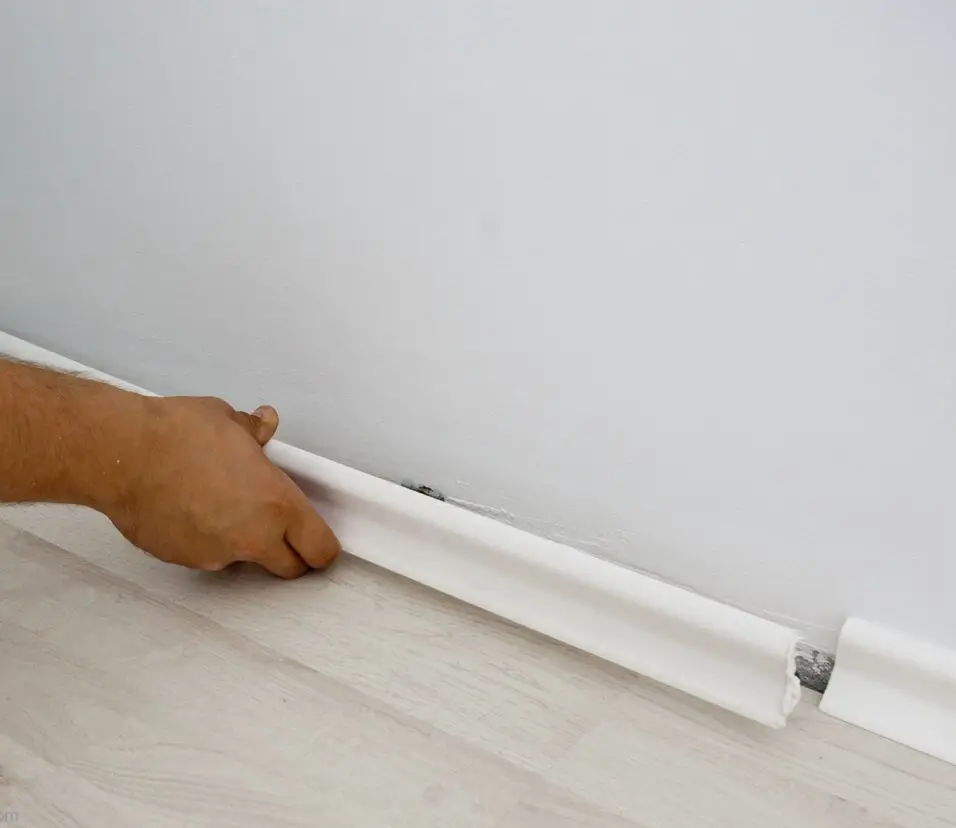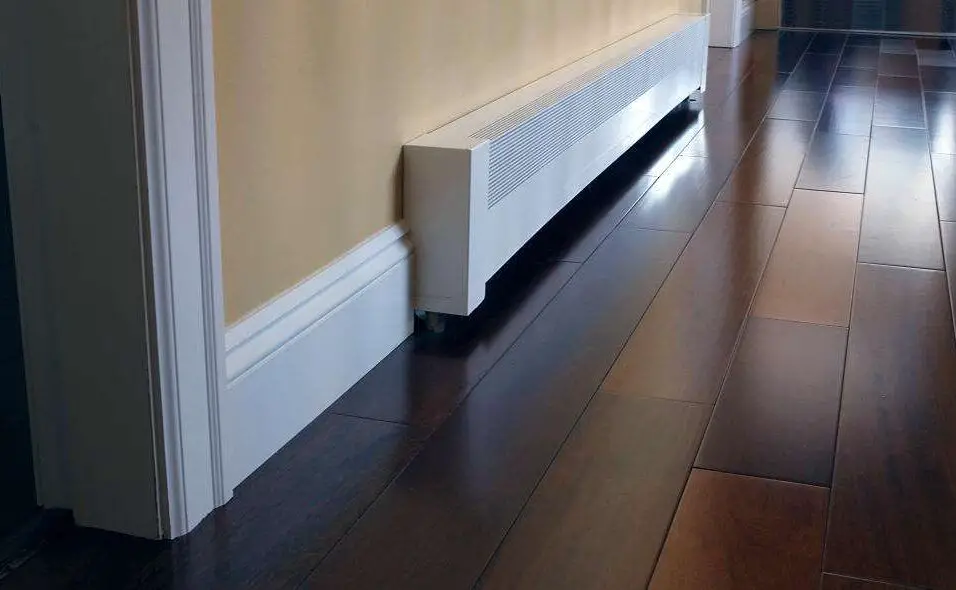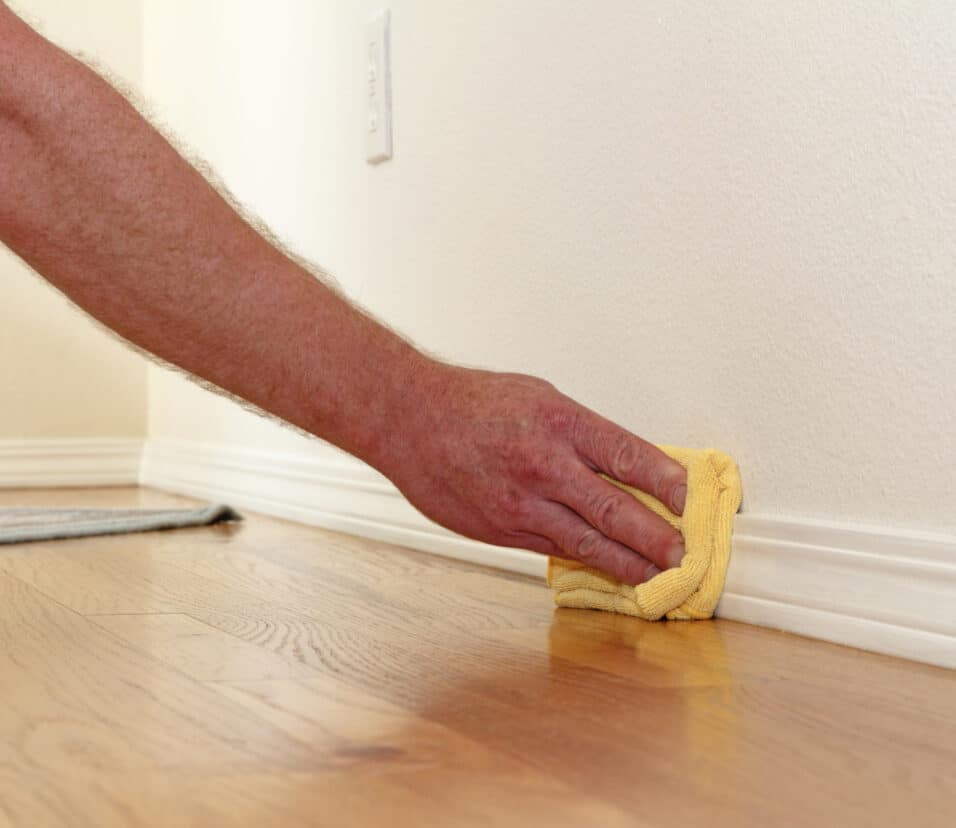How To Clean Walls And Baseboards
Introduction
How To Clean Walls And Baseboards: Cleaning walls and baseboards is an essential part of maintaining a clean and hygienic home. Over time, these surfaces can accumulate dirt, dust, and grime, making them look dull and unappealing. Additionally, walls and baseboards can also become stained or marked, especially in high-traffic areas. Regular cleaning not only improves the overall appearance of your home but also helps to prolong the lifespan of these surfaces.
However, cleaning walls between baseboards can be a daunting task if you don’t know where to start or what products to use. It’s important to approach the cleaning process with the right techniques and tools to ensure effective and safe results.
Walls and baseboards are often overlooked when it comes to regular cleaning routines. However, neglecting these surfaces can lead to a buildup of dirt, dust, and allergens, which can negatively impact indoor air quality. Additionally, stains and marks on walls and baseboards can make your home look unkempt and dirty, even if the rest of the space is clean. By regularly cleaning these surfaces, you can maintain a fresh and inviting atmosphere in your home.

What is the best way to clean baseboards and walls?
Grab a stack of Magic Erasers or whichever brand you prefer, a bucket of warm, soapy water or vinegar and water, and simply swipe. Wring the sponge out well before you wipe, so you don’t leave too-damp boards to dry. If you don’t have painted baseboards, substitute wood cleaner.
When it comes to cleaning baseboards and walls, it is important to find the best method that will effectively remove dirt, dust, and grime without causing any damage. Baseboards and walls can accumulate a significant amount of dirt over time, especially in high-traffic areas of the home. Therefore, it is essential to regularly clean and maintain them to keep your home looking fresh and well-maintained.
One of the best ways to clean baseboards and walls is to start by dusting them. Dusting helps to remove loose dirt and debris, making the cleaning process easier and more effective. You can use a microfiber cloth or a duster to gently wipe down the baseboards and walls, ensuring that you reach all the corners and crevices. It is important to be gentle while dusting to avoid scratching or damaging the surfaces.
Cleaning Baseboards and Walls: Gentle Washing for a Fresh Look
After dusting, the next step is to wash the baseboards and walls. You can create a simple cleaning solution by mixing warm water with a mild detergent or dish soap. Dip a sponge or a soft cloth into the solution and wring out any excess liquid. Then, gently scrub the baseboards and walls, paying extra attention to any stubborn stains or marks. It is important to avoid using abrasive cleaners or scrub brushes, as they can cause damage to the surfaces.
If you are dealing with particularly stubborn stains or marks on your baseboards and walls, you can try using a magic eraser. Magic erasers are highly effective at removing tough stains and marks without causing any damage. Simply wet the magic eraser and gently scrub the affected areas. However, it is important to test the magic eraser on a small, inconspicuous area first to ensure that it does not cause any discoloration or damage.
Finally, after washing the baseboards and walls, it is important to dry them thoroughly. Excess moisture can lead to mold and mildew growth, so it is crucial to ensure that the surfaces are completely dry. You can use a clean, dry cloth or towel to gently pat the baseboards and walls dry. Additionally, opening windows or using fans can help to speed up the drying process.
What is the best thing to wash walls with?
The wall cleaner you’ll use is safe, effective, and readily available—all you need is dish soap and salt. The dish soap cuts through grease and dirt while the salt acts as an abrasive to remove stains and grime. Combine one cup of dish soap and one cup of salt to mix a thick, gritty paste.
When it comes to washing walls, it is important to choose the right cleaning solution to ensure a thorough and effective cleaning. The best thing to wash walls with depends on the type of paint or finish on the walls, as well as any specific stains or dirt that need to be removed. There are several options available for washing walls, each with its own advantages and considerations.
One of the most common and effective solutions for washing walls is a mixture of warm water and mild dish soap. This gentle solution is suitable for most painted walls and can effectively remove dirt, dust, and light stains. To use this solution, simply mix a few drops of dish soap with warm water in a bucket or spray bottle. Use a soft sponge or cloth to gently scrub the walls, working from top to bottom. Rinse the walls with clean water and dry them thoroughly with a clean towel or cloth.
Tackling Stubborn Stains: Vinegar Solution for Wall Cleaning
In some cases, walls may require a stronger cleaning solution to remove stubborn stains or grease. In these situations, a mixture of warm water and vinegar can be effective. Vinegar is a natural cleaner that can help break down grease and grime. Mix equal parts vinegar and warm water in a bucket or spray bottle, and use a sponge or cloth to scrub the walls. Be sure to test this solution on a small, inconspicuous area of the wall first to ensure it does not damage the paint or finish.
For walls with more delicate finishes, such as wallpaper or textured surfaces, it is important to use a gentle cleaning method to avoid causing damage. In these cases, a dry cleaning sponge or eraser can be used to gently remove dirt and stains. These sponges are designed to lift dirt and grime without the need for water or cleaning solutions. Simply rub the sponge or eraser over the surface of the wall, applying gentle pressure as needed.
Overall, the best thing to wash walls with depends on the specific needs of the walls and the type of finish or paint. It is always a good idea to test any cleaning solution on a small, inconspicuous area of the wall before applying it to the entire surface. Additionally, be sure to follow any manufacturer’s instructions or recommendations for cleaning and maintenance to ensure the longevity and appearance of the walls.
What is the best mop to wash walls?
You can even purchase microfiber wall mops to get the job done faster! Using a flat mop instead of a traditional string mop is preferable, as it will cover a wider area of the wall with each pass, but in a pinch any mop will do.
When it comes to washing walls, having the right mop can make all the difference. The best mop for washing walls is one that is specifically designed for this task, with features that make it easy to reach high and low areas, and effectively remove dirt and grime. With so many options available in the market, it can be overwhelming to choose the best mop for washing walls. However, by considering a few key factors, you can find the perfect mop for your needs.
The material of the mop head. Microfiber mop heads are highly recommended for washing walls, as they are effective in removing dirt and grime without leaving streaks or residue. The microfiber material is also gentle on painted surfaces, preventing any damage or scratches. Look for a mop head that is removable and machine washable, as this will make it easy to clean and maintain.
Mop Handle Design: Choosing Length, Adjustability, and Maneuverability
The design and length of the mop handle. A mop with a long handle is essential for reaching high areas, such as ceilings or tall walls. Look for a mop with an adjustable handle, as this will allow you to customize the length according to your needs. Additionally, a mop with a swivel head is beneficial, as it allows for easy maneuverability and reaching corners and edges.
The type of mop. Flat mops are a popular choice for washing walls, as they have a large surface area that can cover more space in less time. Look for a flat mop with a wide head, as this will allow for efficient cleaning. Additionally, some mops come with a spray feature, which can be convenient for applying cleaning solution directly onto the walls.
The overall quality and durability of the mop. Look for a mop that is made from high-quality materials, such as sturdy plastic or metal, as this will ensure its longevity. Read customer reviews and ratings to get an idea of the mop’s performance and durability. Additionally, consider the price range that fits your budget, as there are mops available in various price ranges.
Is it necessary to wash walls?
Benefits To Cleaning Your Walls
Allergy relief A dirty wall isn’t generally a health concern, but allergy sufferers will thank you for removing dust and other allergens. Extended paint life: Cleaning grimy, heavily-soiled walls can damage paint. Periodic cleaning over the life of the wall minimizes costly paint jobs.
Yes, it is necessary to wash walls regularly to maintain a clean and healthy living environment. Walls are constantly exposed to dirt, dust, and other pollutants that can accumulate over time. Regular washing helps to remove these contaminants and prevent them from building up, which can lead to a variety of issues.
Washing walls helps to improve indoor air quality. Dust and dirt that accumulate on walls can become airborne and contribute to poor air quality. This can be particularly problematic for individuals with allergies or respiratory conditions. By regularly washing walls, these contaminants are removed, resulting in cleaner and healthier air.
Mold and Mildew Prevention: The Role of Regular Wall Washing
Washing walls can help to prevent the growth of mold and mildew. Moisture can easily get trapped on walls, especially in areas such as bathrooms and kitchens. This can create an ideal environment for mold and mildew to thrive. Regular washing helps to remove any moisture and prevent the growth of these harmful substances.
Washing walls can help to maintain the appearance of a room. Over time, walls can become discolored and stained due to dirt, dust, and other factors. Regular washing helps to remove these stains and restore the original color and brightness of the walls. This can greatly enhance the overall aesthetic appeal of a room.
Washing walls can also help to prolong their lifespan. Dirt and grime can gradually wear down the paint and finish of walls, causing them to deteriorate more quickly. By regularly washing walls, these damaging substances are removed, helping to preserve the integrity and longevity of the walls.
What do professionals use to clean baseboards?
Microfiber cloth:
One easy way to clean baseboards is with your trusty microfiber cloth. Simply move furniture out of the way, wipe down your baseboards and then put everything back into place. Vacuum attachment: Using your vacuum cleaner attachment is another painless means of cleaning baseboards.
Professionals use a variety of tools and products to clean baseboards effectively. Baseboards are often overlooked when it comes to cleaning, but they can accumulate dust, dirt, and grime over time. Regular cleaning of baseboards not only improves the overall appearance of a room but also helps to maintain a clean and healthy environment. In this article, we will explore some of the common tools and products that professionals use to clean baseboards.
Vacuum Cleaner:
One of the most common tools used by professionals to clean baseboards is a vacuum cleaner. A vacuum cleaner with a brush attachment can easily remove dust and dirt from the baseboards. The brush attachment helps to agitate the dust and dirt, making it easier to vacuum away.
Microfiber Cloth:
Another tool that professionals use is a microfiber cloth. Microfiber cloths are highly effective at picking up dust and dirt without leaving behind any residue. They can be used dry or slightly dampened with water or a cleaning solution to wipe down the baseboards.
Cleaning Solution:
Professionals often use a cleaning solution to tackle stubborn stains and grime on baseboards. There are various commercial cleaning solutions available in the market specifically designed for baseboards. These solutions are formulated to break down dirt and grime, making it easier to wipe them away.
Toothbrush:
In some cases, professionals may use a toothbrush to clean hard-to-reach areas or intricate designs on baseboards. The bristles of a toothbrush can effectively scrub away dirt and grime from crevices and corners.
Steam Cleaner:
For deep cleaning, professionals may use a steam cleaner to clean baseboards. Use high-temperature steam to loosen and dissolve dirt and grime, making it easier to wipe them away. Is particularly effective for removing stubborn stains and disinfecting the baseboards.
When it comes to cleaning walls and baseboards, it is important to use the right products and tools to ensure effective and safe cleaning. The recommended cleaning products for walls and baseboards include mild dish soap, white vinegar, and a gentle all-purpose cleaner. These products are effective in removing dirt, grime, and stains without causing any damage to the surfaces.
In addition to the cleaning products, you will need a few essential tools for cleaning walls and baseboards. A soft microfiber cloth or sponge is ideal for wiping down the walls and baseboards. It is important to avoid using abrasive materials or scrub brushes as they can scratch or damage the surfaces. A bucket of warm water and a mop or a long-handled duster can also be useful for reaching high areas and corners.
Are there any specific techniques or methods to effectively clean walls and baseboards?
When it comes to effectively cleaning walls and baseboards, there are a few techniques and methods that can help you achieve the best results. Firstly, it is important to start by removing any dust or loose dirt from the surfaces. This can be done by using a soft-bristle brush or a vacuum cleaner with a brush attachment. By doing this, you will prevent the dirt from spreading and smearing during the cleaning process.
Next, you can prepare a cleaning solution by mixing a mild detergent or dish soap with warm water. Dip a sponge or a microfiber cloth into the solution and wring out any excess liquid. Gently wipe the walls and baseboards, making sure to pay extra attention to any stains or marks. For stubborn stains, you can use a non-abrasive cleaner or a paste made of baking soda and water. Remember to always test any cleaning product on a small, inconspicuous area before applying it to the entire surface.
How frequently should walls and baseboards be cleaned to maintain their appearance?
To maintain the appearance of walls and baseboards, it is recommended to clean them on a regular basis. The frequency of cleaning will depend on various factors such as the amount of traffic in the area, the presence of pets or children, and the overall cleanliness of the environment. In general, it is advisable to clean walls and baseboards at least once every few months.
Regular dusting: Dusting walls and baseboards regularly can help prevent the buildup of dirt and grime. Use a soft cloth or a duster to gently remove dust from the surfaces. Pay special attention to corners and crevices where dust tends to accumulate.
Spot cleaning: In addition to regular dusting, it is important to address any stains or marks on the walls and baseboards promptly. Use a mild detergent or a specialized wall cleaner to spot clean the affected areas. Avoid using harsh chemicals or abrasive cleaners, as they can damage the paint or finish.
Are there any precautions or considerations to keep in mind while cleaning walls and baseboards?
When cleaning walls and baseboards, it is important to take certain precautions and considerations to ensure the best results and avoid any damage. Firstly, always test any cleaning product or solution on a small, inconspicuous area of the wall or baseboard before applying it to the entire surface. This will help you determine if the product is safe to use and will not cause any discoloration or damage.
Additionally, be mindful of the type of paint or finish on your walls and baseboards. Different types of paint may require different cleaning methods or products. For example, if you have walls with a matte finish, avoid using abrasive cleaners or scrub brushes that could scratch the surface. Instead, opt for gentle cleaning solutions and soft cloths or sponges.
Furthermore, it is important to protect your hands and skin while cleaning. Wear gloves to prevent any skin irritation or contact with harsh chemicals. If you are using a ladder or step stool to reach higher areas, ensure it is stable and secure to avoid any accidents or injuries. Lastly, always follow the instructions provided by the cleaning product manufacturer and use proper ventilation in the room to avoid inhaling any fumes.
Are there any alternative or natural cleaning solutions that can be used for walls and baseboards?
Yes, there are several alternative and natural cleaning solutions that can be used to clean walls and baseboards. These solutions are not only effective in removing dirt and grime, but they are also safe for both the environment and your health.
One popular natural cleaning solution is a mixture of vinegar and water. Simply mix equal parts of white vinegar and water in a spray bottle and use it to clean your walls and baseboards. Vinegar is a natural disinfectant and can effectively remove stains and odors. Another natural solution is a mixture of baking soda and water. Create a paste by mixing baking soda with a small amount of water and apply it to any stubborn stains or marks on your walls and baseboards. Let it sit for a few minutes before scrubbing it off with a soft cloth or sponge.
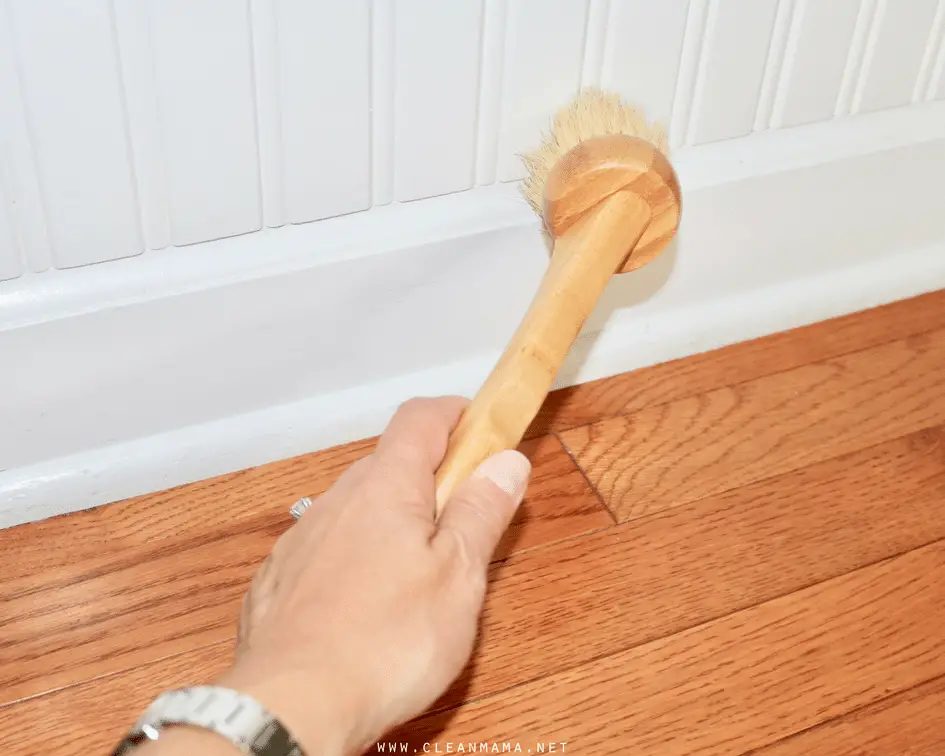
Conclusion
Overall, cleaning walls and baseboards is an essential task that should be included in regular household cleaning routines. By following the proper techniques and using the right tools, it is possible to achieve a clean and fresh-looking living space. Whether it is removing dust, dirt, or stains, there are various methods available to tackle different types of wall surfaces and baseboard materials.
Firstly, it is important to assess the condition of the walls and baseboards before starting the cleaning process. This will help determine the appropriate cleaning method and products to use. For painted walls, a gentle cleaning solution consisting of warm water and mild dish soap can be effective in removing dirt and grime. However, for more stubborn stains, a mixture of baking soda and water can be used as a natural and non-abrasive alternative.
When it comes to baseboards, a vacuum cleaner or a soft-bristle brush can be used to remove loose dust and debris. For a deeper clean, a damp cloth or sponge can be used to wipe down the baseboards, ensuring to reach into the corners and crevices. Additionally, using a mild cleaning solution can help remove any stubborn stains or marks on the baseboards.
Cleaning walls and baseboards is a necessary task to maintain a clean and hygienic living environment. By following the appropriate techniques and using the right tools and cleaning solutions, it is possible to achieve a fresh and spotless look. Regular cleaning of walls and baseboards not only enhances the overall appearance of a room but also helps to prolong the lifespan of these surfaces. So, whether it is a weekly cleaning routine or a deep cleaning session, taking the time to clean walls and baseboards is definitely worth the effort.




